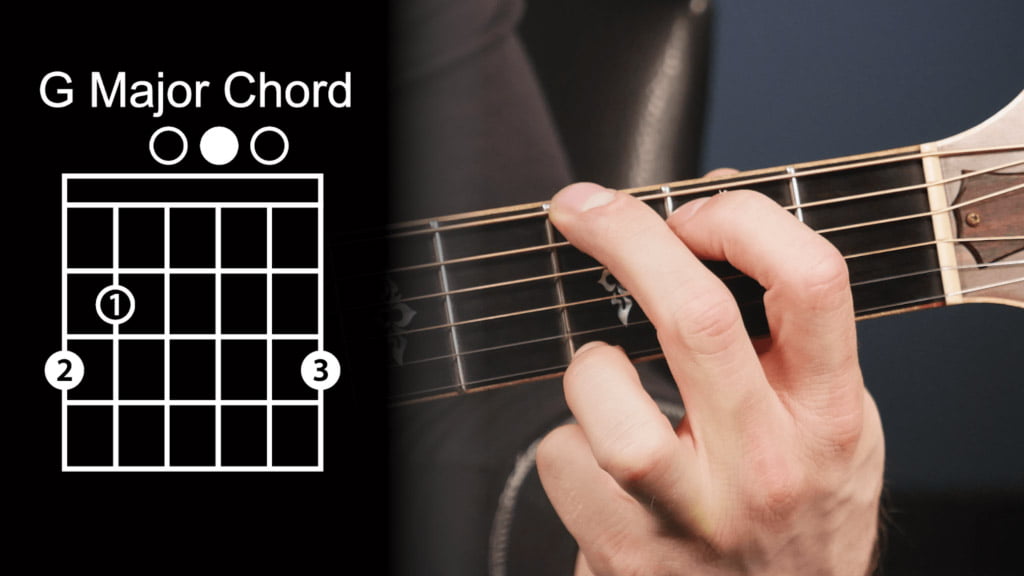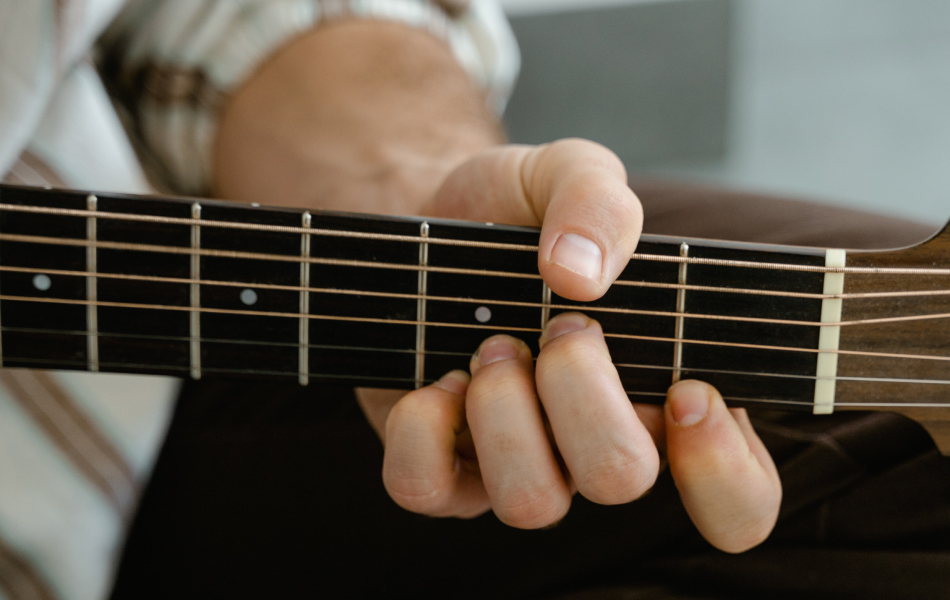Chords are an indispensable ingredient in any accompaniment song. For beginners, it is easy to make mistakes while practicing, causing the playing process to be slower. In this article, we will summarize the five most common mistakes in playing ukulele and guitar chords beginners often encounter:
Contents
1. Place your finger on the note position by feeling
Many guitarists put their fingers on frets according to the sensation of which notes are easy to put first, there is no specific sequence rule. This easily causes confusion during chord transitions, affecting the speed of the song strongly.

► How to fix:
Put the notes on the chord in order from top to bottom (from the 1st string), put the notes on the top first, then place the next notes below.
2. Place your finger on each note in the chord
This error will cause a slowdown when playing a song. A chord usually consists of 3-4 notes, so if you put each finger on each note in the chord, it will take time and interrupt when playing the song.

► How to fix:
When you first practice the chords, you can be divided into two steps. Put one finger first as a pivot finger (usually the index finger), then place the other fingers on the fretboard. Practice slowly and repeat these steps several times to achieve precision when fretting notes. After a while, when you master the technique, you can reduce the number of steps to one, which means you put your fingers on 3 or 4 notes simultaneously. At this point, you will have good speed and play correctly.
3. The force to press down the notes is weak
Some beginners think that when playing guitar, just simply putting their fingers on the notes in a chord can sound good, but on the contrary, the notes are often not clean and have a buzzing sound. The simple reason is that the finger strength is not enough.

► How to fix:
Increase the force to press down on the strings
4. Put your finger in any position on the fretboard
This is a fairly common error for those who are new to chord pressing. They often place their finger on the fretboard regardless of position, as long as it fits in their finger. As a result, the sound of the guitar is not round, resonant, and buzzing. To overcome the above situation you need to pay attention:
In a fretboard, we divide into three spaces (the space towards the tuner, the middle space, and the space towards the body).
+ The space towards the tuner: Very high pressing force, low efficiency, more buzzing sound;
+ The middle space: Relative pressing force, good sound;
+ The space towards the body: Light pressing force, good sound.

► How to fix:
Placing your finger in the center of the fret or the position close to the guitar body will make a good sound. Your finger can be more painful but the sound is good.
In the above photo, all 3 fingers are positioned towards the body, this position requires very light force and produces good sound.
5. Place fingers not perpendicularly (relative to the fretboard) for fear of finger pain
Many newcomers, especially girls, are often afraid to put their fingers perpendicular to the neck because it hurts their fingers. Their fingers often block on the neck, causing touching the other strings, making a buzzing sound, and weakening their arm strength.

►How to fix:
Whenever you fret your notes, especially when fretting chords, you will need to curve your fingers perpendicular to the fretboard.
The five mentioned above are the most common mistakes that ukulele/ guitar beginners make when playing chords. So you should pay attention to avoid them and if you’re making any of the above mistakes, fix it now to play your instrument better.
Don’t forget to install Guitar Tunio – a powerful tuner mobile app to tune your ukulele or guitar accurately, try many different alternative tunings, learn ukulele and guitar chords, as well as improve your timing, rhythm, and skills with the built-in metronome in the app. It’s available on App Store and Play Store, check it out!
